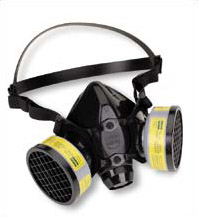 Lots of attention to disease transmission and illness related to air travel lately. A new paper in the journal Indoor Air suggests that if passengers would wear N-95 respirators when they fly, they could significantly reduce their risk of infection. You can read the paper “Risk assessment of airborne infectious diseases in aircraft cabins” at Indoor Air 2012; 22: 388—395.
Lots of attention to disease transmission and illness related to air travel lately. A new paper in the journal Indoor Air suggests that if passengers would wear N-95 respirators when they fly, they could significantly reduce their risk of infection. You can read the paper “Risk assessment of airborne infectious diseases in aircraft cabins” at Indoor Air 2012; 22: 388—395.
Looking at the spatial and temporal distributions of airborne infection risk in an aircraft cabin, the researchers used a case of an influenza outbreak in a 4-h flight in a fully occupied, wide- body aircraft cabin e.g., Boeing 747, 767, or 777 cabin. Considering the characteristics of exhaled droplets carrying infectious agents and their dispersion, as well as the inhalation of the droplets by susceptible passengers, they determined through modeling the number of secondary infection cases can be dramatically reduced for influenza cases if N95 respirator masks are used by the passengers. They claim their approach and methods can easily be used to assess infection risk in other enclosed spaces such as buildings, trains, and buses.
Recent related microBEnet blog posts include “Destination — not the flight — more likely to make you sick”
and Airports, germs and contagion networks.